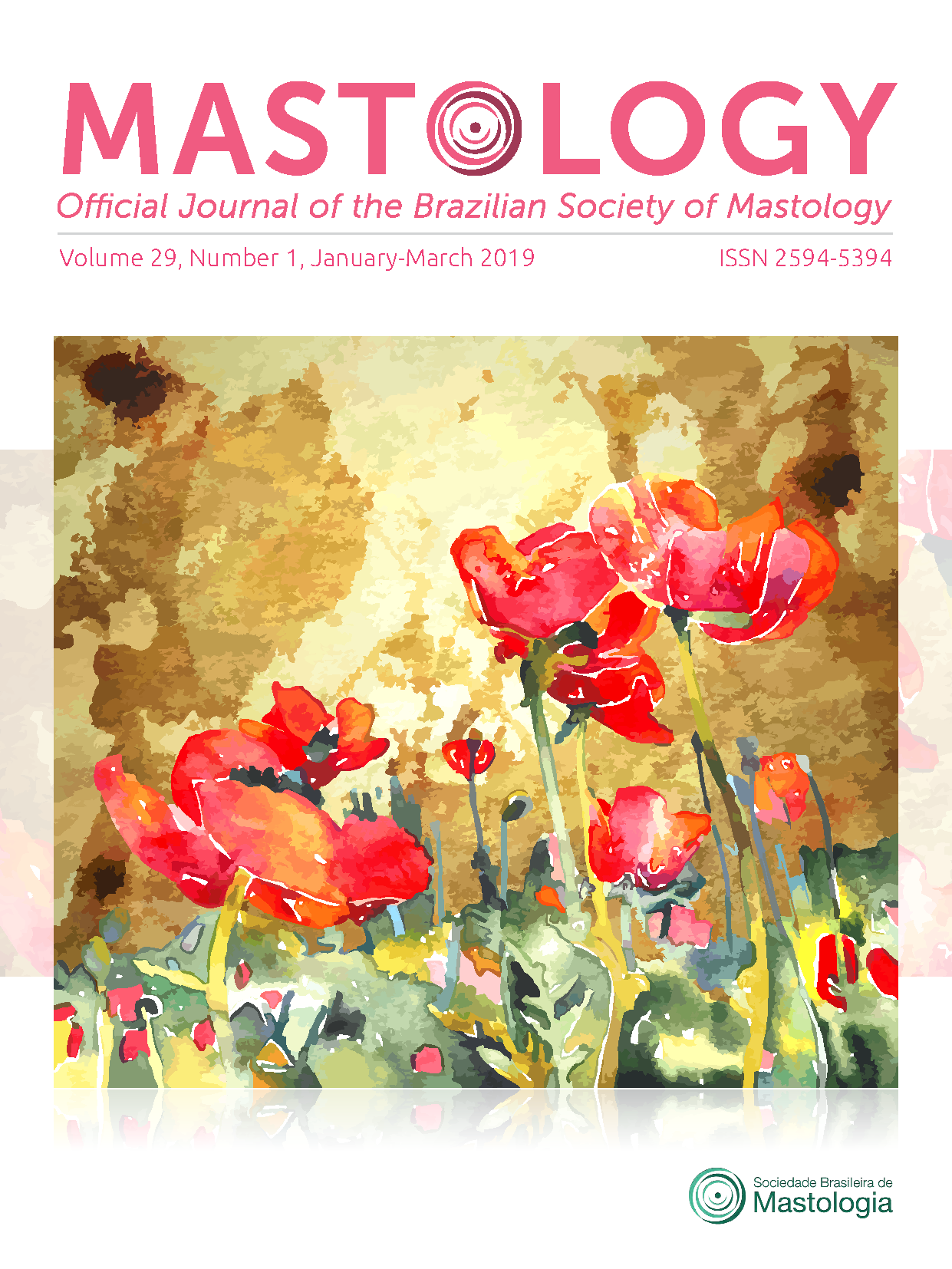USE OF COMPRESSION GARMENT IN THE TREATMENT OF MALIGNANT LYMPHEDEMA IN A PATIENT WITH RECURRENT BREAST CANCER
CASE REPORT
Keywords:
lymphedema, breast cancer, physiotherapy specialtyAbstract
Introduction: Malignant lymphedema is a rapidly progressive condition, and its treatment is a major challenge. Objective: To demonstrate the benefit of using compression garments in reducing limb volume and improving the symptoms of a patient with malignant lymphedema with recurrent breast cancer. Case report: A 67-year-old woman, diagnosed with a 2.3 cm, triple negative, invasive ductal carcinoma in the left breast, submitted to quadrantectomy with axillary dissection (T2aN1bM0). The patient developed benign lymphedema after eight years of surgery, but only started complex decongestive physiotherapy three years after the diagnosis, presenting an important improvement. The following year, the patient returned with complaints of worsening lymphedema. At the examination, there was an expressive volume increase and areas of vascular alteration in the left upper limb (LUL) and in the anterior quadrant of the thorax. The exams confirmed axillary vein thrombosis due to tumor obstruction. Lymphoscintigraphy showed unsatisfactory lymphatic drainage. As a last treatment option, the use of LUL low elastic compression garment was adopted, after poor success after the use of multi-layered compression bandages. LUL volume was 6,158.1 mL prior to using the garment. After ten days of continuous use, the volume decreased to 5,174.2 mL. In the last evaluation, the volume was 4,510.8 mL, presenting a reduction of 1,647.3 mL (26.7%). The patient developed acute respiratory failure caused by pleural metastasis, and died. Conclusion: The compression garment provided benefits such as significant improvement in the feeling of heaviness in the limb due to the reduction of volume and in the ease of putting on and taking off the garment in or make the hygiene, when compared to the multilayer compression bandages. Other advantages were the reduction of costs and the promotion of well-being.
Downloads
References
Cormier JN, Askew RL, Mungovan KS, Xing Y, Ross MI, Armer JM. Lymphedema beyond breast canecr: a systematic review and meta-analysis of cancer-related secondary lymphedema. Cancer. 2010;116(22):5138-49. https://doi.org/10.1002/cncr.25458
Bevilacqua JL, Kattan MW, Changhong Y, Koifman S, Mattos IE, Koifman RJ, et al. Nomograms for Predicting the Risk of Arm Lymphedema after Axillary Dissection in Breast Cancer. Ann Surg Oncol. 2012;19(8):2580-9. https://doi.org/10.1245/s10434-012-2290-x
Weissleder H, Schuchhardt C. Lymphedema diagnosis and therapy. 4th ed. Baden-Baden: Viavital Verlag Gmbh; 2008.
Lanza M, Bergmann A, Ferreira MG, Aguiar SS, Dias RRA, Abrahao KS, et al. Quality of Life and Volume Reduction in Women with Secondary Lymphoedema Related to Breast Cancer. Int J Breast Cancer. 2015;2015:586827. https://doi.org/10.1155/2015/586827
Liao SF. Lymphedema Characteristics and the Efficacy of Complex Decongestive Physiotherapy in Malignant Lymphedema. Am J Hosp Palliat Care. 2016;33(7):633-7. https://doi.org/10.1177/1049909115587496
Hwang KH, Jeong HJ, Kim GC, Sim YJ. Clinical Effectiveness of Complex Decongestive Physiotherapy for Malignant Lymphedema: A Pilot Study, Ann Rehabil Med. 2013;37(3):396‑402. https://doi.org/10.5535/arm.2013.37.3.396
Beck M, Wanchai A, Stewart BR, Cormier JN, Armer JM. Palliative care for cancer-related lymphedema: a systematic review. J Palliat Med. 2012;15(7):821-7. https://doi.org/10.1089/jpm.2011.0494
Stillwell GK. Treatment of postmastectomy lymphedema. Mod Treat. 1969;6(2):396-412. REFERENCES
Vries M, Vonkeman WG, van Ginkel RJ, Hoeskstra HJ. Morbidity after axillary sentinel lymph node biopsy in patients with cutaneous melanoma. Eur J Surg Oncol. 2005;31(7):778‑83. https://doi.org/10.1016/j.ejso.2005.05.003
Finnane A, Lui Y, Battistura D, Jansa M, Hayes SC. Lymphedema after breast or gynecological cancer: use and effectiveness of mainstream and complementary therapies. J Altern Complement Med. 2011;17(9):867-9. https://doi.org/10.1089/acm.2010.0456
Kim SJ, Park YD. Effects of complex decongestive physiotherapy on the oedema and the quality of life of lower unilateral lymphedema following treatment for gynecological cancer. Eur J Cancer Care. 2008;17(5):463-8. https://doi.org/10.1111/j.1365-2354.2007.00877.x
Campanholi LL, Duprat Neto JP, Fregnani JHTG. Evaluation of inter-rater reliability of subjective and objective criteria for diagnosis of lymphedema in upper and lower limbs. J Vasc Bras. 2015;14(1):16-2. http://dx.doi.org/10.1590/1677-5449.20140037
Cobbe S, Nugent K, Real S. Pilot Study: The Effectiveness of Complex Decongestive Therapy for Lymphedema in Palliative Care Patients with Advanced Cancer. J Palliat Med. 2018;21(4):473-8. https://doi.org/10.1089/jpm.2017.0235
Campanholi LL, Lopes GC, Mansani FP, Bergmann A, Baiocchi JMT. The validity of an adjustable compression velcro wrap for the treatment of patients with upper limb lymphedema secondary to breast cancer: a pilot study. Mastology. 2017;27(3):206-12. https://doi.org/10.5327/Z2594539420170000203}
Ehmann S, Whitaker JC, Hampton S, Collarte A. Multinational, pilot audit of a Velcro adjustable compression wrap system for venous and lymphatic conditions. J Wound Care. 2016;25(9):513-20. https://doi.org/10.12968/jowc.2016.25.9.513
Downloads
Published
How to Cite
Issue
Section
License
Copyright (c) 2019 Larissa Louise Campanholi, Jaqueline Munaretto Timm Baiocchi, Fabio Postiglione Mansani

This work is licensed under a Creative Commons Attribution 4.0 International License.







